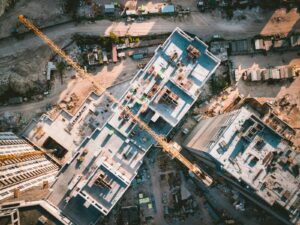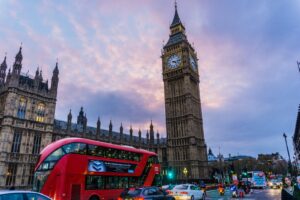Uniting the crowd

Crowd-based tools have the power to put citizens at the heart of urban renewal. In the second instalment based on his new book, Recivilising: The Rise of the Renewal Renegades, Storm Cunningham looks at the impact
In the first article in this series I talked about the growth in crowdfunding tools and how they were helping citizen-led projects to get off the ground. However, it’s not just a lack of tools that’s been holding back effective public engagement in renewal projects. Low standards and expectations play a major role. The level of citizen involvement in the future of their communities and regions has traditionally been so low (almost non-existent) that institutions quickly reach a level of pride and satisfaction when even the smallest amount of progress is made in citizen engagement.
Here’s an extract from an article by Kaid Benfield called How El Paso Ended Up With America’s Best Smart Growth Plan: ‘The Environmental Protection Agency honored the draft of Plan El Paso with a national award as the year’s best example of outstanding programmes, policies and regulations. Plan El Paso “deputised the entire city as citizen planners” with a series of hands-on public planning workshops comprising over eight weeks of intense community exercises and discussions to generate the plan vision. This process was followed by over a year of regular meetings with a citizen advisory committee to refine the draft plan. A project website that also welcomed discussion received over 30,000 visitors. Plan El Paso offers ideas for the revitalisation of our urban core. My experience has been that an informed public generally makes very good decisions about their community’s future. Plan El Paso repeatedly acknowledges that its best ideas were locally generated.’

As the excerpt indicates, El Paso did a wonderful job of engaging its citizens in creating a shared vision, and a plan based on that vision. They accomplished this without the benefit of technologies specifically designed for the process of citizen-led renewal. They obviously used what tools they had very well, but imagine how much easier that process would have been—and how many more citizens could have been involved — with a regeneration-specific crowdfunding tool.
Citizen-led regeneration goes far beyond crowdfunding, though. Two things will supercharge the already explosive trend towards citizen-led regeneration:
1) integration with the fast-growing trend towards real-time urban telemetry, and 2) an integrated package of crowd tools specifically designed for community renewal: crowdsourcing, crowdmapping, and crowdfunding.
URBAN CROWDMAPPING
A telemetry system collects and processes real-time data, and presents it in a way that informs better decisions. Telemetry is used in a broad range of technical disciplines and industries, but applying it to cities is a fairly recent endeavour. Most major ICT companies, consulting firms, and related research institutions have telemetry initiatives. IBM has Smarter Planet/Smarter Cities. Cisco has Connected Urban Development. Siemens has Infrastructure & Cities. MIT has Smart City SENSEable lab. As the market matures, the range of participants (and clients) will likely mushroom.
Currently, these real-time urban telemetry systems are primarily set up to be used by the usual suspects (the technocrats of public agencies). Giving these institutions better access to smarter systems is a good thing, no doubt. However, let’s not forget that giving our militaries access to ‘smart’ bombs and missiles has also resulted in much more deadly ‘friendly fire’ incidents. Putting smarter, more-powerful tools in the hands of poorly-trained, poorly-informed, or unmotivated personnel sometimes just enables them to do more damage.
The growth of crowdmapping in recent years has been similarly explosive, and not just in the Europe and the U.S. The catastrophic Russian wildfires of 2010 were crowdmapped, with citizens using their PCs and smart phones to upload info on fires and safe havens, making both fighting and escaping the fires far more efficient. New businesses are appearing with new iterations of such tools almost monthly. CitySourced in Los Angeles recently created Harford County Connect in Maryland. See-Click-Fix is probably the best-known in the U.S., with Ushahidi (founded in Kenya) being a global pioneer.
Some cities don’t wait for commercial providers, and create their own crowdmapping apps from scratch. The Boston Mayor’s Office of New Urban Mechanics is one such example, with their wildly-successful Citizens Connect smart phone app for city maintenance. While Citizens Connect has made city maintenance vastly more efficient (and even fun!), local officials say that its greatest value has been building public trust in government.
When such apps become part of a comprehensive regeneration programme — as they soon will — citizens are never disconnected from the community renewal process. No matter whether they are online with their laptop at home or walking down the street with their smart phone, they are a part of a living, pulsing regenerative process. This is as opposed to being the recipients of a mechanised, engineered process imposed by the privileged few.
In fact, with the advent of tools for citizen-led regeneration, the current concept of public engagement becomes obsolete. ‘Engagement’ implies that whoever is doing the engagement owns the process, and that those being engaged don’t. In a citizen-led revitalisation programme, it’s the citizens who choose which public agencies or private developers they trust as partners. As owners of the process, they don’t need to engage themselves.
SOURCING THE WISDOM OF CITIZENS
Very few cities have the motivation and quality of leadership it takes to do what El Paso did: inventing their own process and tools from scratch. Most communities that do so experience failure, or mediocre results at best. What saved El Paso was confidence in the wisdom of their citizens.
If more cities’ leaders had such respect for their citizens, there would be far fewer cities in dire straits. The norm is an autocratic, top-down, paternalistic approach, with some stakeholder engagement window dressing. Such modalities are more indicative of contempt than respect. And even the best of projects will be suspect when hatched behind closed doors. Whether an elected leader supports (or at least doesn’t resist) citizen-led renewal initiatives will very soon become a reliable predictor of their longevity in office.
Crowdsourcing is a collaborative design and evaluation process. It taps the wisdom and creativity of the many, but avoids the stupefying effect of committees (the best of both worlds). It can be used to create visions, strategies, policies and even products. The Pentagon famously used crowdsourcing in 2011 to design their new Flypmode Combat Support Vehicle (XC2V). A process that normally would have taken ten years and hundreds of millions of dollars produced a working prototype in 14 weeks and under $700,000. The process drew 35,000 designs by 2,900 community members from over 100 countries for a $10,000 prize.
For crowdsourcing to reach its full potential as a community revitalisation tool, it must be integrated with crowdmapping and crowdfunding. In this manner, citizens can enter and add value to the process at any point. They can respond to an existing project with ideas or money. They can launch a discussion around a distressed property by snapping a photo of it on their smart phone and adding some text about what could be done with it. Other citizens vote on their favourite ideas, with the best ones quickly rising to the top for funding and implementation.
Imagine what will happen when cities have both real-time urban telemetry and a comprehensive citizen-led regeneration program powered by crowdsourcing, crowdmapping, and crowdfunding. The result could be magical. The citizens would both provide and have access to accurate, real-time data about their city or region. Citizens would be better-informed, meaning fewer ignorance-based NIMBY objections to good initiatives. Real-time feedback isn’t just better: it’s the only kind that doesn’t do damage. Indeed, delayed feedback is the most reliable way to produce chaos.
The next step is an integrated crowdsourcing, crowdmapping, and crowdfunding platform, specifically designed for creating and maintaining citizen-led programmes for the regeneration of communities and natural resources. The step beyond that will be to network local citizen-led renewal programmes worldwide. The result could be the advent of global recivilisation: a more-cooperative, more-connected global mindset, with economies primarily based on renewing our natural, built, and socioeconomic environments. This is what we are now working on at ReCitizen, L3C.
- This article is excerpted from Storm’s upcoming third book, ReCivilizing: Rise of the Renewal Renegades, due in January of 2013. The first instalment can be read here.















